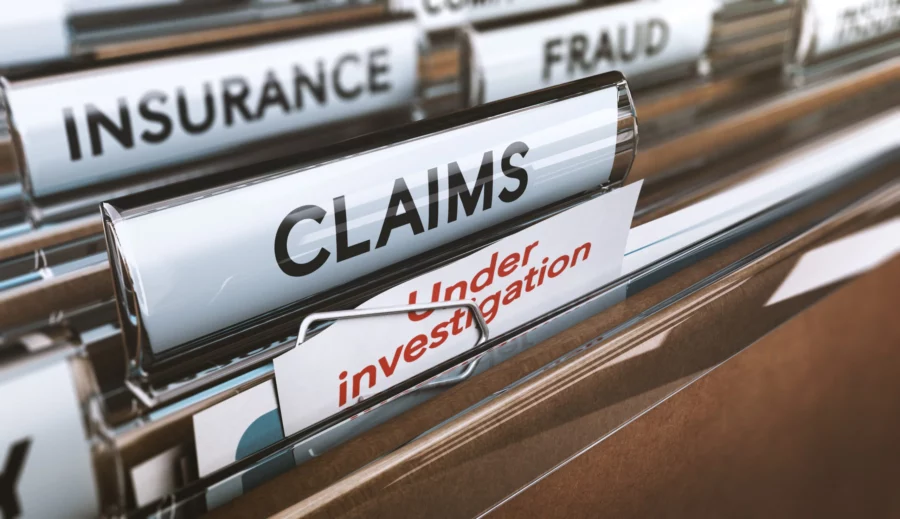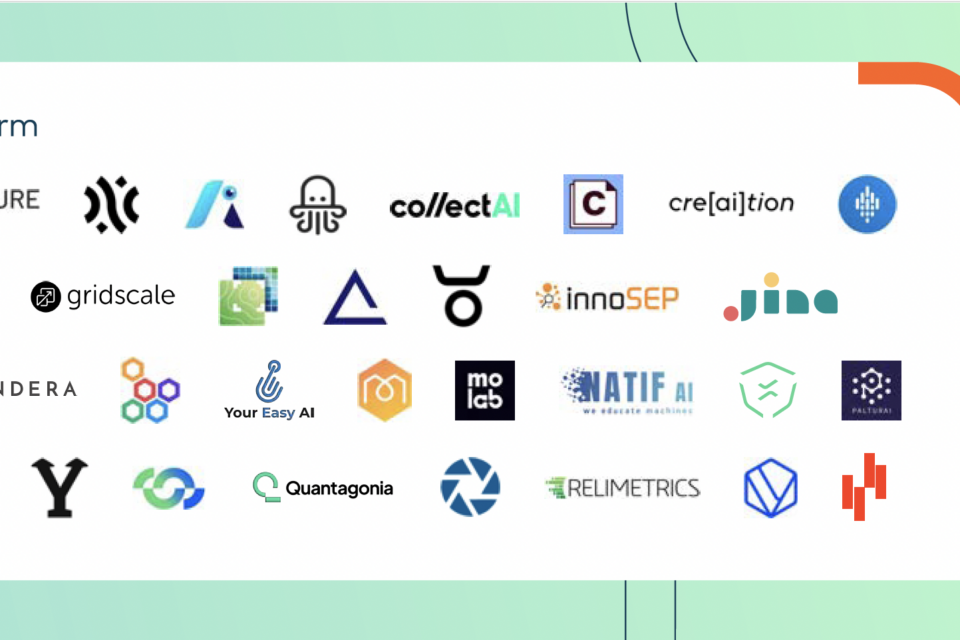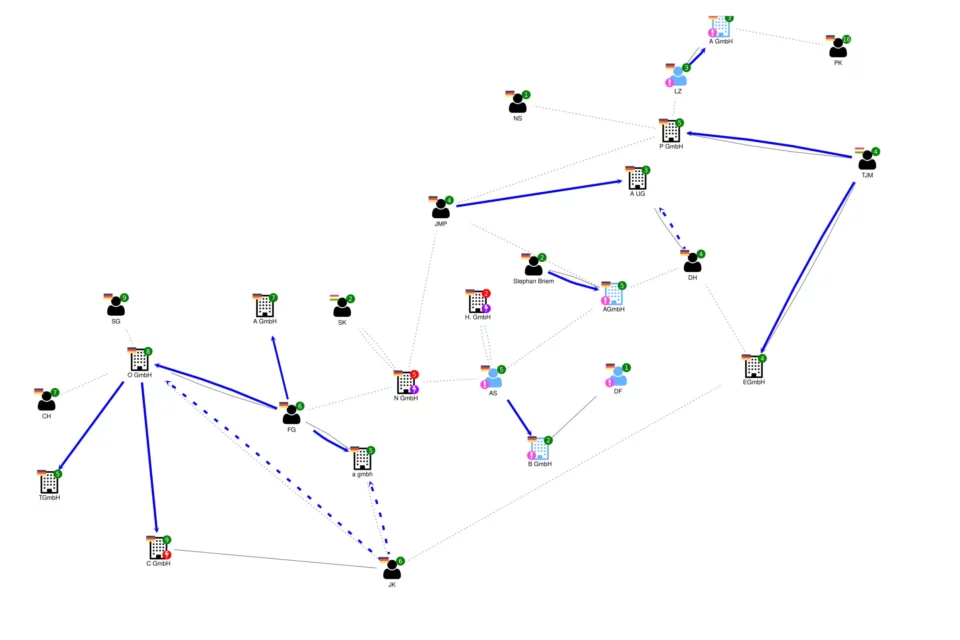Assign Risk Markers to Your “Trouble Makers”
Easily assign a risk marker to your “trouble makers,” as shown in this example for International Tobacco Ltd.
Perhaps the company belongs to an undesirable industry, is involved in fraud, or is facing legal disputes?
You decide which risks should be flagged.
As a result, all colleagues will see a prominent red icon and receive a brief notification about the specific risk type – whether in the company profile, within the network, or in the ownership structure.
In reality, it is often observed that individual “trouble makers” negatively impact their surroundings, forming entire “risk clusters.”
Distance-to-Trouble Algorithm
This is where our Distance-to-Trouble algorithm comes into play. It calculates a risk score for each node in the network.
The highest risk originates from the “trouble maker” itself. Depending on the proximity and nature of its connections, this risk spreads throughout its network.
Assess the risk exposure within your business partner network as well.
Uncover the Business Network of Your New Partner
With just a few clicks, you can fully expand the business network of your new partner, Technology SE.
In our example, you will see the following:
– Technology SE has a direct legal link to International Tobacco Ltd., your flagged “trouble maker,” through a profit transfer agreement.
– There are an unusually high number of relationships with inactive companies in the network.
– Numerous investments are located in high-risk countries.
With these detailed insights, you can now better evaluate whether this new partnership is acceptable for you.
Past Business Relationships Matter Too
Historical business connections can also be relevant for risk assessments. In the Technology SE network, the following details stand out:
– A managing director of Technology SE previously held an executive role in a now inactive company that was officially dissolved.
Here, too, you can benefit from complete transparency – gaining precise insights into past and present relationships, including their timelines and any existing controlling influences.









